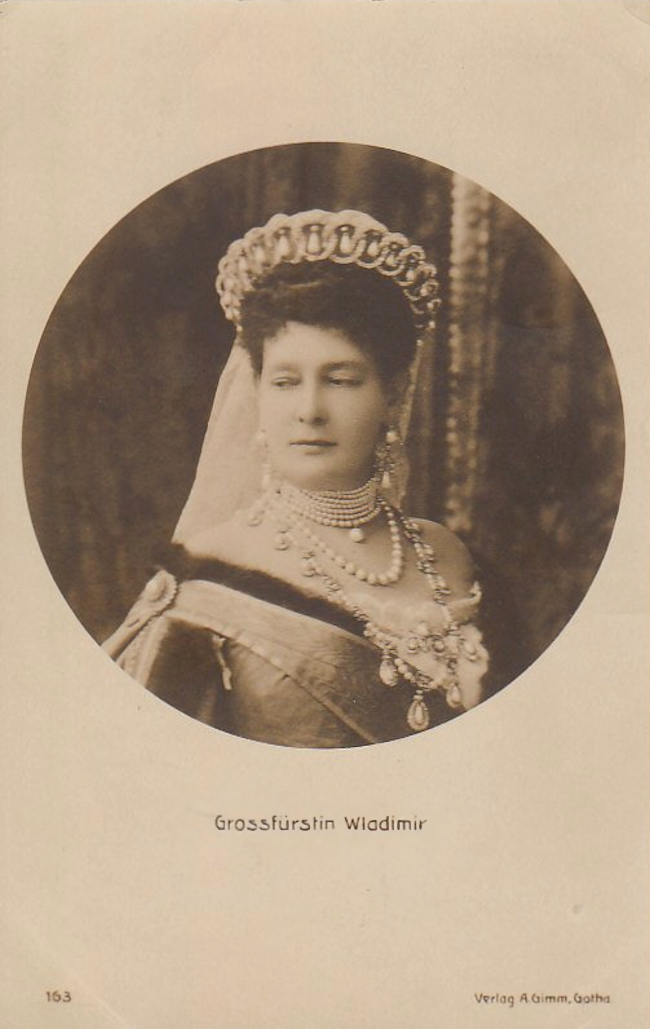 |
| Engraving made in celebration of the wedding of Princess Stéphanie and Archduke Rudolf. |
Adapted and edited - a lot - from the Smithsonian website:
This spectacular veil was handmade for Princess Stéphanie of Belgium for her wedding to Austro-Hungarian Crown Prince Rudolf in 1881. The veil is made in fine Brussels Point de Gaze needle lace embellished with elaborate ferns, lilies, roses and other flowers on a gossamer fine handmade ground powdered with tiny dots. The Hapsburg-Lothringen shield dominates the center back of the veil, while the coat-of-arms of Belgium is in the center of the garland of 21 coats-of-arms along the border with Belgian province shields on one side and the Austro-Hungarian on the other. Delicate rosebud motifs embellish the top of the veil. The veil, 100 inches wide and 123 inches long, was constructed entirely of variations of tiny buttonhole stitches made with a needle and very fine cotton thread. The denser motifs have up to 88 stitches and 102 rows per square inch.
Handmade needle and bobbin laces rarely show the date and place of construction, but worked in needle lace at the sides of the veil’s central Belgian Lion motif are "Bruxelles 1880" and "Léon Sacré." Queen Marie Henriette had commissioned Léon Sacré, a famous Brussels lace merchant in the 19th century, to have the veil designed and made by the best Flemish needle lace makers for her daughter’s wedding. It was a wedding gift from the city of Brussels. In her memoir "I Was To Be Empress" (1937), the Princess wrote that, "My mother devoted herself indefatigably to the preparation of my trousseau, which was to be as complete and costly as possible. [...] For months the girls and women of Flanders had been busying their nimble fingers in the preparation of masterpieces of lace, intended for their Princess."
Stéphanie and Rudolf were married in Vienna on May 10, 1881, when the bride was not yet 17 years old. According to the New York Times, "Princess Stéphanie wore a magnificent robe of cloth of silver, with a train elaborate in embroidery, orange blossoms arranged in bunches looping up her dress, and a veil of Brussels lace specially made for the occasion."
 |
| Engraving of the wedding. I haven't been able to find any photographs of the wedding or portraits of the bride. |
It was a famously unhappy marriage which had lasting ramifications: their union produced a daughter but no son to become heir to the Habsburg throne and Rudolf, after killing his mistress, committed suicide eight years after the wedding. Archduke Franz Ferdinand then became heir, but his assassination in 1914 precipitated World War I and the end of the Hapsburg Empire. The Princess had married again - happily - in 1900; her second husband was a Hungarian nobleman. But life in post-war Hungary was not without its difficulties and at some point, perhaps to help pay for living expenses, the Hapsburg Imperial Bridal Veil was sold. Marjorie Merriweather Post, the founder of the Hillwood Museum and Gardens, bought the lace veil around 1925 for the wedding of her oldest daughter in 1927. It remains unknown from whom Post purchased the veil, or for how much. In 1964, Post donated the veil to the Smithsonian, and the artifact has been part of the textile division at the National Museum of American History ever since.
***
 |
| Engagement portrait (?) of Princess Stéphanie and Archduke Rudolf; the future bride was fifteen and had not actually reached puberty. |
Having grown up in a very unhappy family, she married into an equally miserable one. After the birth of their only child, a daughter, the marriage quickly deteriorated, and the murder/suicide of her husband and his mistress at Mayerling in 1889 left her devastated and humiliated; she was not yet twenty-five at the time. It seems that, perhaps in compensation, she developed a taste for extravagance, something that was much harder to sustain after the fall of the empire at the end of World War I. It appears, though, that her remarriage to Count Lonyay - a nobleman of lower rank, a fact that caused much disapproval among many of her relations - was a happy one; they remained together for forty-five years, until her death at the age of eighty-one.
 |
| The Dowager Crown Princess in Hungarian court dress, circa 1890s. |
 |
| Circa 1890s. |
 |
| Circa 1890s. |
 |
| With her second husband, Count Elemér Lónyay de Nagy-Lónya et Vásáros-Namény, probably around the time of their marriage. |
 |
| The Count and Countess, 1903. |
 |
| Circa 1910s. |
 |
| Circa 1910s. |
 |
| The same. (From the collection of Ralf De Jonge.) |
 |
| Tiara bonus: Seen in the image above, it's apparently the work of Chaumet. Its fate is unknown. |




































































